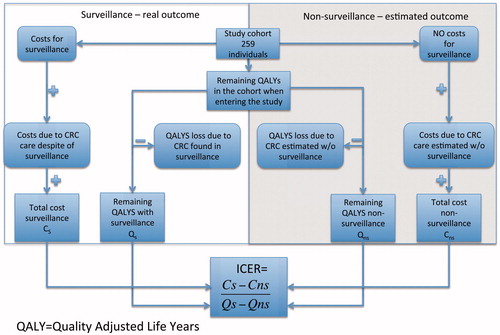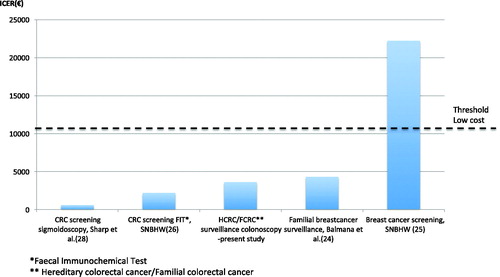Figures & data
Table 1. Classification of family history for definition of hereditary colorectal cancer (HCRC) and familial colorectal cancer (FCRC).
Figure 1. Model for cost–utility analysis comparing colonoscopic surveillance vs. non-surveillance and calculations of incremental cost effectiveness ratio (ICER).

Table 2. Baseline data and outcome of surveillance for the study cohort.
Table 3. Estimations on expected cases of CRC in the study cohort without surveillance.
Table 4. Calculations on differences in quality-adjusted life years (QALYs), surveillance vs. non-surveillance.
Table 5. Costs for the health care sector and loss of production, surveillance vs. non-surveillance.


